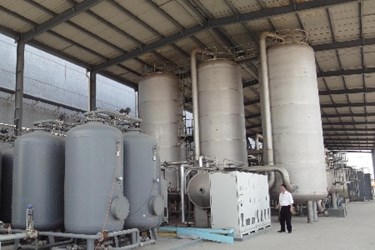Advanced Oxidation Process For Refinery Wastewater Treatment

A large European refinery company was interested in advanced oxidation process solution to treat 40,000 m3 batches of contaminated water. In order to get this project approved technically and economically, the company selected ESCO International as a supplier of AOP systems.
To assess whether AOP would be successful, a 30L representative sample of wastewater was send to ESCO International.
|
Cavern Content |
Levels Range |
Discharge Limits |
|
Volume |
40,000 m3 |
- |
|
Salts (seawater) |
20 g/l |
- |
|
Ammonia |
40-45 mg/l |
< 5 mg/l |
|
Sulphides |
120-130 mg/l |
< 1 mg/l |
|
COD |
250-600 mg/l |
STD < 150 mg/l |
|
BOD5 |
< 3 mg/l |
< 30 mg/l |
|
TOC |
15-150 mg/l |
- |
|
Phenol |
5-10 mg/l |
STD < 1 mg/L |
|
Free Oil |
Not detected |
< 10 mg/l |
|
Solids |
Not detected |
< 30 mg/l |
The table below shows the contaminants concentration range expected in the wastewater.Table below illustrates test results for the best AOP configuration and test conditions.
TOC analysis was also conducted in order to gather information about the total oxidative destruction of organic compounds in wastewater. The results demonstrated the viability of the AOP process.
Total elimination of Sulphides, Ammonia and Phenol was achieved.
COD reduction exceeded the target set by the company’s standards of less than 150 ppm.
|
Compounds |
Feed, ppm |
Treated Effluent, ppm |
|
NH3 |
39-45 |
< 1 |
|
Nitrate |
n.a |
57 |
|
Sulphides |
126 |
< 0.01 |
|
Sulphates |
n.a. |
28 |
|
Phenol |
7.5 |
< 0.01 |
|
TOC |
107 |
24 |
|
COD |
287 |
63 |
About ESCO International
ESCO International technologies offer unique solutions to some of the most critical water and waste water and gas effluent challenges using latest advances in Advanced Oxidation Processes, Ozone and UV technologies.
Source: ESCO International
